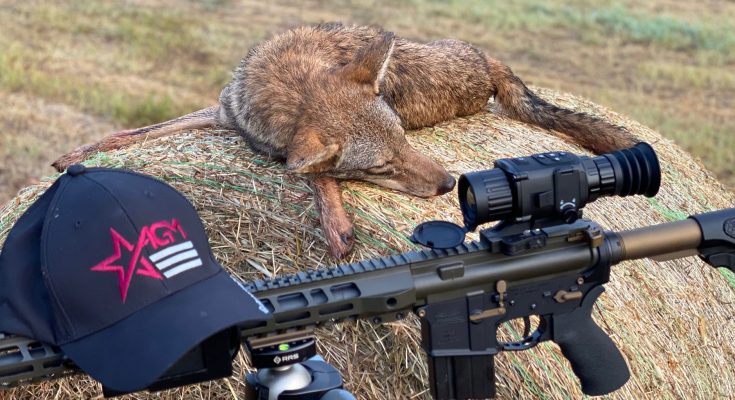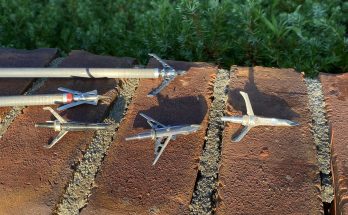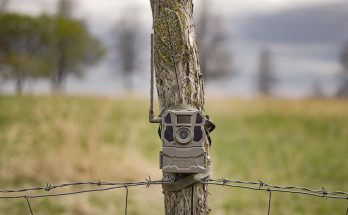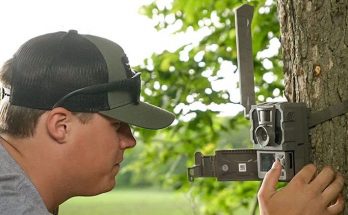Guns for Varmint Hunting
There are two types of Varmint Hunting Rifles. The kind you have and the one you want to buy next. It is only fair to warn you that this type of hunting is very addictive, and you will get in trouble with your spouse. I didn’t say wife because this is something the women really get into. My wife and daughters like it because the action is fast and you don’t have to sit all day on a stand and freeze your buns off. Instead of trying to sneak a new varmint rifle into the house, you may have to buy two. His and Hers 22-250’s. Has a nice ring to it, doesn’t it.
Varmint Hunting Rifles and Optimal Calibers
Introduction
Varmint hunting, a discipline that demands precision and accuracy, has evolved into a specialized pursuit for enthusiasts and seasoned hunters alike. As the popularity of varmint hunting continues to soar, the demand for reliable and efficient rifles has become paramount. In this guide, we delve into the world of varmint hunting rifles, exploring the best calibers, key characteristics, and the factors that make a rifle excel in this demanding discipline.
Understanding Varmint Hunting
Before delving into the specifics of varmint hunting rifles, it’s crucial to understand the nature of varmint hunting itself. Varmints, typically small mammals or pests such as groundhogs, prairie dogs, and coyotes, pose threats to crops and livestock. Varmint hunting serves a dual purpose: preserving agricultural interests and providing an exciting challenge for hunters. The pursuit requires precision and long-range accuracy, making the choice of rifle and caliber pivotal to success.
Characteristics of Varmint Hunting Rifles
- Accuracy and Precision:
- Varmint hunting demands a high level of accuracy due to the small size of the targets. Rifles designed for this purpose often feature heavy barrels to enhance stability and reduce recoil, contributing to improved accuracy.
- Bolt-action rifles are favored for prairie dogs and ground hogs their inherent accuracy, allowing hunters to take precise shots at long distances at small targets.
- Many hunters have turned to AR style rifles for coyote hunting and hog hunting because of the requirement of fast followup shots at multiple targets. Today’s AR style rifle are extremely accurate and reliable.
- Barrel Quality:
- Varmint rifles typically sport longer, heavy barrels that aid in dissipating heat and maintaining accuracy during prolonged shooting sessions. Stainless steel barrels are preferred for their corrosion resistance and durability.
- Rifling, the spiral pattern inside the barrel, plays a crucial role in stabilizing the projectile. Varmint rifles often feature a faster twist rate to stabilize longer bullets for maintaining velocity for flat trajectories.
- Trigger Systems:
- An adjustable and crisp trigger is essential for varmint hunting rifles. It enables the shooter to achieve a consistent break, minimizing the chances of disrupting the aim during the critical moment of firing.
- Many varmint rifles come equipped with user-adjustable triggers, allowing hunters to customize the pull weight to their preference.
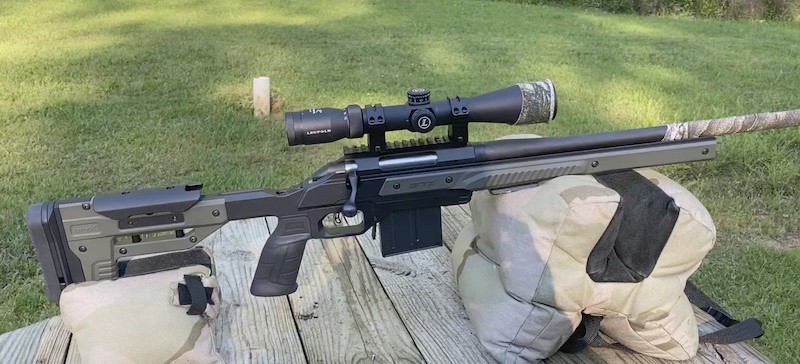
- Stock/Chassis Design:
- Varmint rifle stocks are designed for stability and comfort during long hours of hunting. Laminated wood or synthetic materials are common choices, offering resistance to weather conditions and maintaining structural integrity.
- Thumbhole stocks provide additional control and ergonomic benefits, allowing for a more comfortable shooting experience.
- Modular Chassis are now becoming very popular with long range shooters and varmint hunters. See more about the Chassis below.
- Optics Compatibility:
- Varmint hunting often requires precise shot placement at extended ranges. As a result, these rifles are commonly fitted with high-quality optics, such as powerful variable magnification scopes with a parallax adjustment feature.
- Mounting systems like Picatinny rails are popular for attaching optics and accessories, ensuring a secure and repeatable setup.
Best Calibers for Varmint Hunting
- .204 Ruger:
- Known for its flat trajectory and high velocity, the .204 Ruger is a popular choice for varmint hunters. It excels in delivering accuracy at extended ranges, making it ideal for small to medium-sized varmints.
- .223 Remington:
- Widely regarded as a versatile and accessible caliber, the .223 Remington is a favorite among varmint hunters. It offers a good balance of recoil, velocity, and bullet selection, making it suitable for various varmint species.
- .22-250 Remington:
- Acknowledged for its exceptional velocity and flat trajectory, the .22-250 Remington is a classic varmint hunting caliber. It delivers impressive energy at longer distances, making it effective against larger varmints.
- .243 Winchester:
- Although initially designed for larger game, the .243 Winchester has found favor among varmint hunters due to its manageable recoil and excellent accuracy. It is particularly effective when hunting medium-sized varmints.
- .17 HMR (Hornady Magnum Rimfire):
- Lauded for its high velocity and minimal recoil, the .17 HMR is a rimfire caliber that excels in precision shooting. While not suitable for larger varmints, it is highly effective against smaller species.
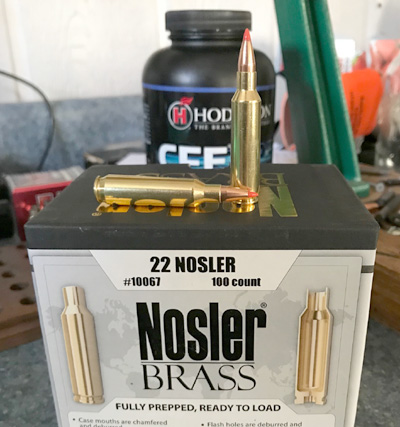
- 22 Nosler: The 22 Nosler was designed to be the highest velocity 22 caliber available in an AR-15 size rifle. It is deadly on coyotes and hogs with proper bullets and becoming more popular with AR-15 shooter every day.
- 22 ARC and 6mm ARC: The 22 ARC and 6mm ARC are new cartridges from Hornady that is designed for AR-15 shooters for varmint hunting. They are designed with a fast twist to shoot long for caliber bullets for retained energy and flat trajectory.
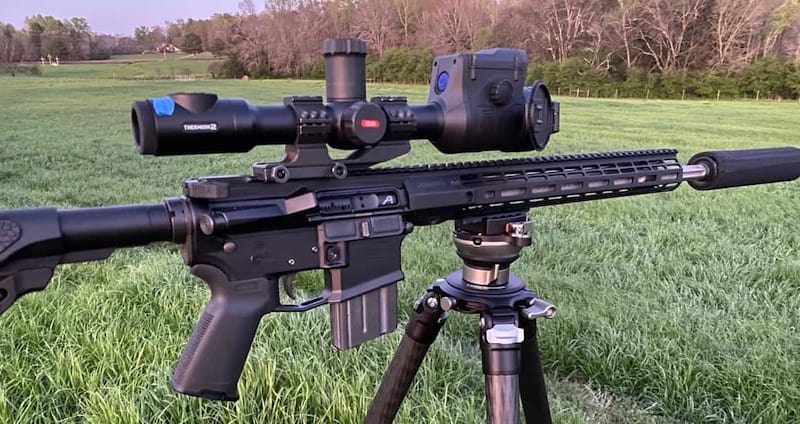
Factors Influencing Caliber Choice
- Target Size:
- The size of the varmints being targeted directly influences the choice of caliber. Smaller varmints may be effectively taken down with lighter calibers, while larger species may require more substantial projectiles.
- Distance:
- Varmint hunting often involves long-range shots. The chosen caliber should be capable of maintaining accuracy and delivering sufficient energy at extended distances.
- Recoil Tolerance:
- The shooter’s ability to handle recoil comfortably is a crucial factor. While heavier calibers may offer more stopping power, they also generate increased recoil. Finding the right balance is essential for accuracy and shooter comfort.
- Ammunition Availability:
- Availability of ammunition is a practical consideration. Popular calibers like .223 Remington and .22-250 Remington are often more readily available, making them convenient choices for many varmint hunters.
Varmint Hunting Regulations
OK, let’s look at some regulations for the Varminter. Actually, any gun that is legal to hunt the critter you are after is a varmint gun. The varmint we hunt and the game laws have the most influence on the gun for the job. If you are planning to call coyotes or crows in close, then a shotgun or small-caliber rifle is ideal. The shot will typically be inside 50 yards, a heavy load of shot (careful of buckshot laws) will do the trick on these critters.
If your shots are going to be long-range, you may need a high-velocity varmint rifle or deer rifle. If you are reading this page, you probably have enough info on the shotguns and deer rifles, so I will concentrate on the centerfire varmint rifles and later on varmint ammo for deer rifles. All the firearms manufacturers have specialized Varmint Hunting Rifles. We will look at them and see what makes them special.
Factory Varmint Rifles

Savage 12 BTCSS Varmint Rifle

Remington M700 Stainless Fluted Varmint Rifle

Winchester XPR Thumbhole Varmint Rifle
Look at the three rifles above and let’s see what the Remington, Savage, and Winchester firearms companies put into their “varmint rifles”. At first glance, they look like typical deer rifles, but if you look a little closer and get inside the rifle there is more than what first meets the eye.
The main differences between these rifles and your deer gun are:
* Caliber
* Stock shape
* Barrel weight
* No Sights
These rifles are typically chambered for small-caliber, high-velocity cartridges that provide the hunter flat trajectory and accurate long-range capability. Shots at prairie dogs or coyotes at 300-500 yards are not uncommon. Another reason for the small-caliber is light recoil. Some lucky prairie dog hunters may shoot hundreds of rounds a day. Most people can’t take the pounding of a deer rifle shot after shot without losing interest or accuracy. Calibers in Varmint rifles are usually .22 centerfire, 6mm/.243, or .25 caliber.

Remington ALPHA 1: The Model 700 Alpha 1 showcases modern key features. A tool-less takedown firing pin assembly, round receiver, fluted 5R barrel, target crown, threaded muzzle, precision ground recoil lugs, Elite Hunter Timney straight trigger, AG composite carbon fiber stock, and an array of other custom features that will maximize the performance of the present-day ammunition.
Most people can shoot these small rounds all day without flinching or fatigue. Let’s don’t forget the game laws either. Some states restrict hunters to small calibers during small game hunting seasons to .22 or.24 calibers. Arkansas, for example, restricts the use of calibers larger than .25 caliber for coyote hunting, and crows can only be hunted with .22 rimfire rifles during small game seasons. So if you hunt deer in Arkansas with a .243 Winchester or 25-06 Remington you also have a “coyote-legal” rifle. If you shoot a 6.5mm (.260 Remington or 6.5×55 ) or larger caliber, you’ll probably need to look into buying a new rifle. The ODHA loves our 6.5mm rifles.
The two most popular calibers for varmint rifles are the 223 Remington and the 22-250. All of the firearms manufacturers chamber their rifles in these calibers. Both of these rounds shoot bullets in the 40-60 grain weights at very high velocities. The 223 pushes a 50-grain bullet about 3200 fps while the 22-250 pushes the same 50-grain bullet up to about 3750 fps. Factory ammo for these two calibers is readily available in a variety of brands and bullet weights, and hand loaders have an endless array of components, dies, and loading data available to them. The .243 Winchester, 6mm Remington, 25-06, and .257 Roberts are also excellent choices for varmint hunting. If you use one of these calibers for deer hunting, you also have a great varmint caliber.
Traditional varmint rifles usually have heavy barrels approximately an inch in diameter and 24-26 inches long. The extra weight lets you hold the rifle more steady for long shots at tiny targets, and is also slower to heat up when the action gets fast at dog town. A hot barrel can sometimes make the rifle shift it’s the point of impact, so most of the time, but not always, heavy is better. Some companies also cut longitudinal flutes along the barrels to aid cooling and reduce the weight while retaining the rigid barrel for accuracy.
The stocks of varmint rifles usually have wide flat forends to accommodate the large barrels, and to rest steadily on sandbags that are often used at the range and sometimes in the field. They are usually made of synthetics or laminated wood to aid in retaining accuracy. Some of the factory rifles are glass bedded, pillar bedded or made with a special bedding block molded into the synthetic stock to provide the best accuracy possible in a production rifle.

Savage IMPULSE PREDATOR Straight Pull Bolt Action Rifle
There have always been folks who prefer lightweight varmint rifles, sometimes referred to as “walking around” rifles. These are usually standard-weight rifles in varmint calibers. All of the manufacturers now produce medium and lightweight rifles in varmint calibers, but the choices are somewhat limited. A great dual-purpose caliber like the .243 Winchester, 6mm Remington, or 240 Weatherby may be just what the doctor ordered for most of us between deer seasons, varmint hunters. The new Nosler 55 grain bullets can be pushed to near 4000 fps from any of the three calibers above for long-range varminting, and the new premium 95-grain bullets form Nosler, Barns, or Winchester are deadly on deer sized game.
Scopes are the only option for most varmint hunters. You need the ability to hit small targets at long range and even if your varmint rifle has iron sights (most don’t), you can’t hit what you can’t see. Varmint scopes start at the 3×9 range and go up. I personally like the Leupold 4.5x14AO, but have one 6.5×20. There are a lot of good brands but I can only recommend Leupold. Leupold is the best scope for the money and you will not need better quality for hunting. I also recommend an adjustable objective lens or side focus to reduce parallax and give you that sharp image you need for long shots, and a fine plex-type crosshair for exact aiming.
Varmint Rifle Chassis

A rifle chassis is a structural framework that serves as the foundation for a rifle, providing a modular and customizable platform for various components. This innovative design has gained popularity among precision shooters, target competitors, and long-range enthusiasts for its versatility and ability to enhance accuracy. Here, we’ll explore the key features and components of a rifle chassis.
Key Components:
- Chassis Frame:
- The central component of a rifle chassis is the frame, typically made of materials like aluminum or steel. This frame provides the structural integrity and rigidity required for accuracy. It also serves as a platform for mounting other components.
- Adjustable Buttstock:
- The buttstock of a rifle chassis is often adjustable for length of pull and cheek weld. This allows shooters to customize the rifle’s fit to their individual preferences and body proportions, promoting comfort and stability during shooting.
- Handguard:
- The handguard, positioned forward on the chassis, serves as a mounting platform for accessories such as bipods, lasers, and lights. It also protects the shooter’s hand from the heat generated by the barrel during rapid or sustained fire.
- Pistol Grip:
- The pistol grip, akin to those found on modern rifles, provides a comfortable and ergonomic grip for the shooter. Some chassis systems allow users to interchange grips based on personal preferences.
- Magazine Well:
- Rifle chassis typically feature a magazine well that accommodates detachable box magazines. This design facilitates quick and efficient reloading, a crucial aspect in precision shooting and competition scenarios.
- Forend and Rail System:
- The forend of a rifle chassis includes a rail system, often Picatinny or M-LOK, allowing for the attachment of accessories like bipods, lasers, or night vision devices. This modularity enables shooters to tailor their rifle to specific needs.
- Action Interface:
- The chassis incorporates an interface for the rifle’s action, whether it be a bolt-action or a semi-automatic system. This interface secures the action within the chassis, ensuring consistent alignment for improved accuracy.
- Adjustable Cheek Riser:
- A cheek riser, typically adjustable for height, provides proper eye alignment with optics. This feature is crucial for maintaining a consistent sight picture and reducing the effects of recoil on the shooter’s cheek.
- Recoil Pad:
- Some rifle chassis systems include an adjustable recoil pad to help manage the effects of recoil. Shooters can customize the length of pull and pad height to optimize comfort and control.
Advantages of Rifle Chassis:
- Modularity:
- Rifle chassis systems offer a high degree of modularity, allowing users to easily customize and upgrade their rifles. This flexibility ensures adaptability to changing preferences or the incorporation of new technologies.
- Accuracy Enhancement:
- The rigid construction of a chassis contributes to improved accuracy by minimizing flex and maintaining consistent barrel harmonics. This is particularly beneficial for precision shooting at long ranges.
- Adjustability:
- The adjustable features of a rifle chassis, including the buttstock, cheek riser, and recoil pad, enable shooters to create a personalized and comfortable fit. This adaptability is especially valuable for prolonged shooting sessions.
- Accessory Compatibility:
- The standardized rail systems on rifle chassis make it easy to attach a variety of accessories, promoting versatility for different shooting scenarios.
- Stability:
- The stability provided by the chassis design aids in mitigating recoil and improving overall control, especially during rapid or sustained fire.
A rifle chassis is a modern and versatile platform that enhances the functionality, ergonomics, and accuracy of a rifle. Whether for competitive shooting, precision hunting, or recreational use, the modular nature of rifle chassis systems allows firearm enthusiasts to tailor their rifles to their specific needs and preferences.
Are You Ready For Varmint Hunting?
Varmint hunting is a challenging and rewarding pursuit that demands specialized equipment, with the rifle being at the forefront. The ideal varmint hunting rifle should exhibit precision, reliability, and the ability to deliver accurate shots at extended ranges. The choice of caliber is equally significant, with factors such as target size, distance, and recoil tolerance influencing the decision.
Whether you opt for the flat trajectory of the .204 Ruger, the versatility of the .223 Remington, or the impressive velocity of the .22-250 Remington, understanding the characteristics and nuances of varmint hunting rifles is key to a successful and enjoyable hunting experience. As technology continues to advance, new calibers and rifle designs will undoubtedly emerge, providing hunters with even more options to tailor their equipment to the specific demands of varmint hunting.
Also see our reports on the
Ruger Predator Rifle
6.5 Grendel
Top 10 Best 22LR Rimfire Rifle Scopes
Top 10 Tripod Legs for Coyote Hunting in 2024
Best AR-15 Scopes Under $100 for 2023
Best Gun Vise For Gun Cleaning & Scope Mounting
Best 10 Bedside Handgun Safes
Top 10 Best Rifle Scopes For Deer Hunting For 2023

